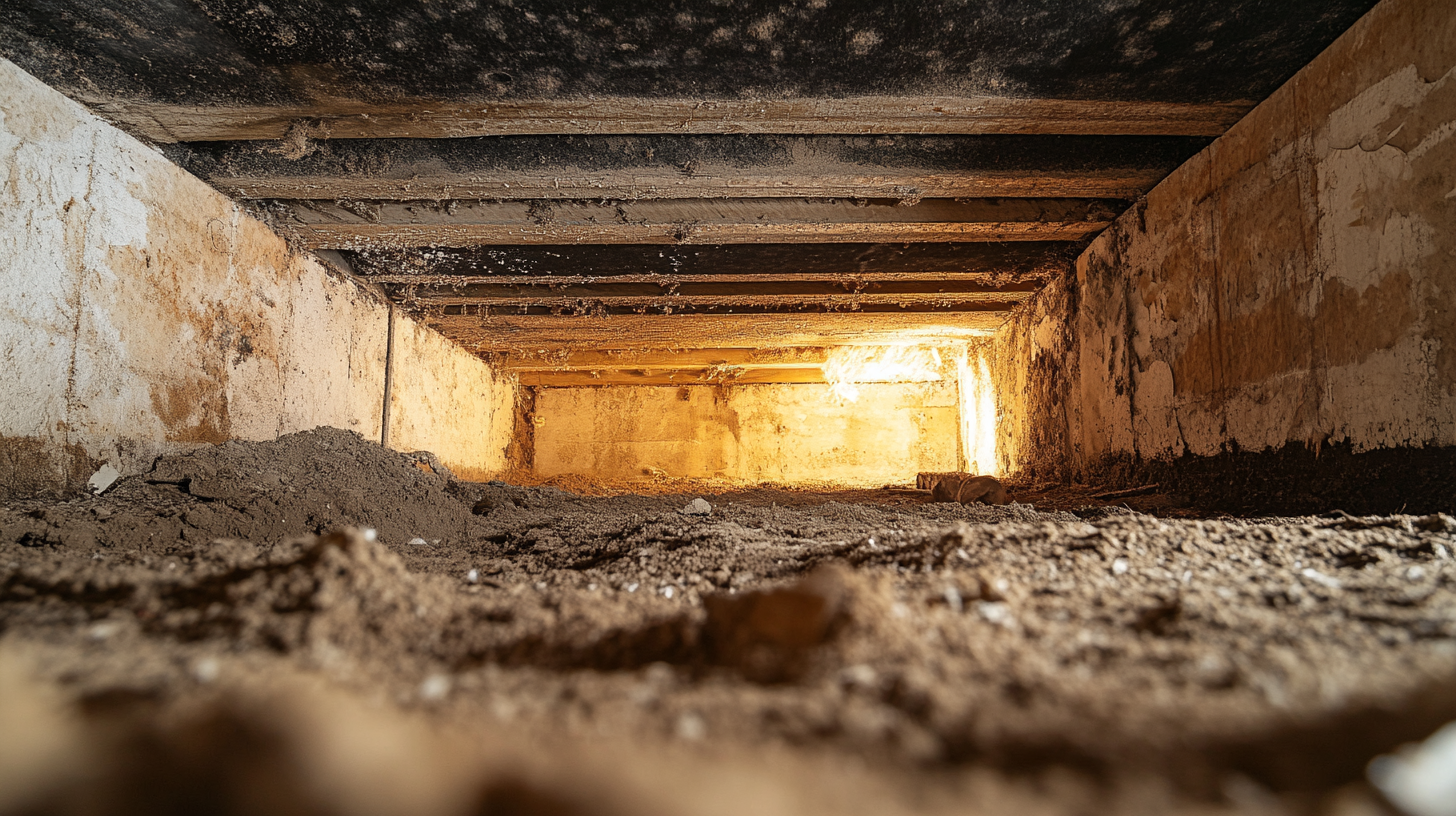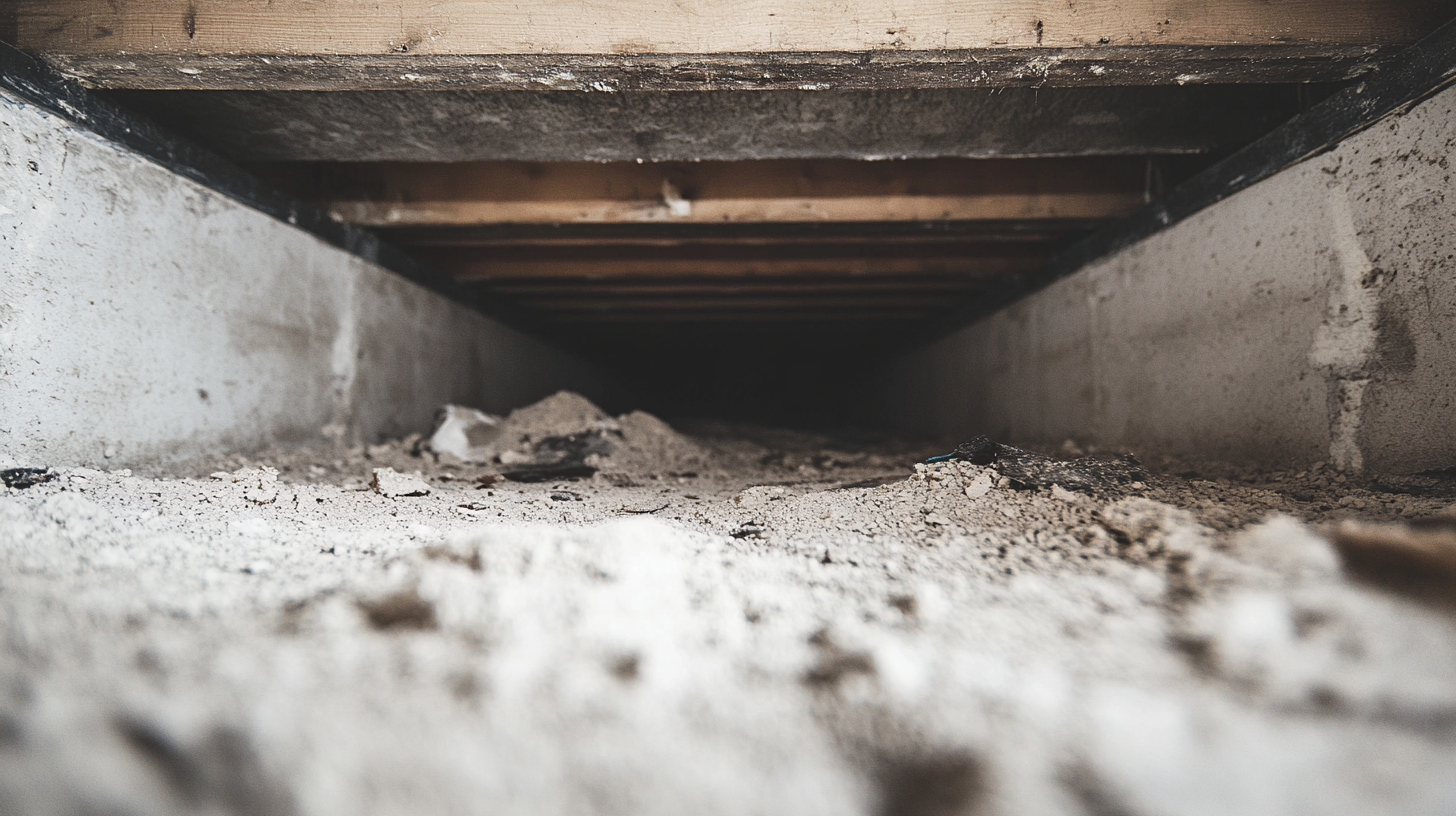Innovative Soot Removal Technologies and Their Effectiveness

Soot removal is a critical task that homeowners and property managers face after incidents like fires or prolonged use of wood-burning stoves. This fine black or dark brown powder that coats surfaces after combustion can be more than just an eyesore; it poses significant health risks and can cause lasting damage to property if not addressed properly. The process of effectively removing soot, however, is fraught with challenges that require a nuanced understanding and a strategic approach.
In this blog, we delve into the complexities of soot removal, drawing on the expertise of fire restoration professionals and the latest research in environmental health. Our goal is to provide you with a comprehensive guide that not only outlines the risks associated with soot but also offers practical advice on how to tackle this stubborn substance safely and efficiently. Whether you're dealing with a recent fire aftermath or looking to clean up an older, soot-coated space, this article aims to equip you with the knowledge and techniques needed to restore your property to its pre-soot condition.
By understanding the nature of soot, the health implications of exposure, and the best practices for removal, you can take informed steps towards a cleaner, safer environment. Let's explore the challenges posed by soot removal and discover effective solutions to overcome them.
The Evolution of Soot Removal Technologies
The journey from traditional soot removal methods to modern technological solutions reflects a significant evolution in our approach to environmental cleanliness and health safety. This section of our blog delves into the transformative technologies that have reshaped how we tackle the pervasive challenge of soot accumulation, a byproduct of combustion that poses risks to both health and property.
Traditional vs. Modern Soot Removal Methods
Traditionally, soot removal has been a labor-intensive process, relying on physical scrubbing and the use of chemical cleaners. These methods, while somewhat effective, often fall short in terms of efficiency and safety, leaving residues that could harm health or damage surfaces. The advent of modern technologies, however, has introduced more sophisticated solutions, including vacuum filtration systems, chemical sponges, and laser cleaning techniques. This comparison not only highlights the effectiveness and efficiency of modern methods but also underscores the limitations of traditional approaches in dealing with soot removal in today's context.
By examining the transition from manual scrubbing and the use of harsh chemicals to the precision of laser ablation and the safety of eco-friendly solvents, we can appreciate the advancements in soot removal technologies. These modern methods not only ensure a deeper clean but also contribute to environmental sustainability and reduce health hazards associated with soot exposure.
The Need for Innovation in Soot Removal
The push for innovation in soot removal technologies is driven by the increasing awareness of the health risks associated with soot and the growing demand for more effective, efficient, and environmentally friendly cleaning solutions. Soot particles, due to their small size, can penetrate deep into the lungs and cause a range of respiratory issues. Moreover, the acidic nature of soot can damage various surfaces, making its removal a priority for property preservation.
In this discussion, we explore why innovative soot removal technologies are not just a matter of convenience but a necessity. With the challenges posed by urban pollution and industrial emissions, the development of advanced soot removal methods becomes crucial. These innovations not only aim to improve the effectiveness of soot removal but also ensure the safety of the individuals performing the cleaning and the environment at large.
Through a detailed exploration of the evolution of soot removal technologies, this blog aims to inform and educate readers about the importance of adopting modern methods for a healthier, safer, and cleaner environment. The shift towards innovative technologies in soot removal is a testament to human ingenuity and our commitment to overcoming environmental challenges.
Cutting-Edge Technologies in Soot Removal
The relentless pursuit of innovation has led to the development of advanced technologies aimed at tackling the stubborn challenge of soot removal. Traditional methods, while effective to a degree, often fall short when it comes to efficiency and thoroughness. In this section, we explore two groundbreaking technologies that are setting new standards in the field of soot removal: laser cleaning technology and ultrasonic cleaning systems. These modern solutions offer a glimpse into the future of post-combustion clean-up, promising not only to enhance cleaning outcomes but also to minimize environmental impact.
Laser Cleaning Technology
How Laser Cleaning Works for Soot Removal
Laser cleaning technology utilizes focused light beams to remove contaminants like soot from various surfaces without damaging the underlying material. This process, known as laser ablation, involves the absorption of intense laser light by the soot particles, which heats them up rapidly, causing them to detach from the surface. The precision and control offered by laser technology make it an ideal solution for delicate or hard-to-reach areas.
Benefits and Limitations of Laser Cleaning
The advantages of laser cleaning are manifold. It is a non-contact, dry cleaning method that eliminates the need for chemicals, reducing the risk of damage to sensitive surfaces and minimizing environmental hazards. Moreover, laser cleaning is highly efficient, capable of targeting specific areas without affecting the surrounding materials. However, the technology does come with limitations. The initial cost of laser cleaning equipment can be high, and its effectiveness may vary depending on the type of soot and the surface being cleaned. Additionally, safety precautions are necessary to protect operators from laser exposure.
Ultrasonic Cleaning Systems
Overview of Ultrasonic Cleaning and Its Application in Soot Removal
Ultrasonic cleaning systems harness the power of high-frequency sound waves to create cavitation bubbles in a liquid medium, which then collapse with great intensity. This process effectively dislodges and removes soot particles from surfaces submerged in the cleaning solution. Ultrasonic cleaning is particularly effective for intricate items or components with complex geometries, where manual cleaning would be impractical or impossible.
Advantages and Considerations When Using Ultrasonic Technology
One of the primary benefits of ultrasonic cleaning is its ability to clean thoroughly and quickly, reaching areas that are typically challenging to clean by other methods. It is also a gentle cleaning process, posing minimal risk of damage to delicate items. However, there are considerations to keep in mind. The effectiveness of ultrasonic cleaning can depend on the type of soot, the material of the object being cleaned, and the composition of the cleaning solution. Additionally, while ultrasonic cleaners are generally safe, proper handling and maintenance are essential to ensure optimal performance and longevity of the equipment.
Assessing the Effectiveness of New Technologies in Soot Removal
The introduction of new technologies in the realm of soot removal has been a game-changer for industries and households alike. However, the true measure of these innovations lies in their effectiveness, which can be assessed through a set of comprehensive performance metrics. Additionally, examining case studies and real-world applications provides tangible insights into the practical benefits and limitations of these technologies. This section delves into the criteria for evaluating soot removal technologies and highlights examples of their successful implementation.
Performance Metrics
Criteria for Evaluating the Effectiveness of Soot Removal Technologies
The effectiveness of soot removal technologies can be assessed through several key performance metrics:
- Efficiency: How quickly and thoroughly the technology can remove soot from various surfaces without repeated treatments.
- Safety: The level of risk the technology poses to operators and the environment, including potential hazards and the need for protective measures.
- Environmental Impact: The technology's footprint in terms of waste generation, energy consumption, and the use of chemicals or other materials that could harm the environment.
- Cost-Effectiveness: The overall expenses involved in using the technology, including initial investment, maintenance, and operational costs, compared to the benefits it provides.
- Versatility: The range of materials and types of soot the technology can effectively handle, including its adaptability to different cleaning scenarios.
- These metrics serve as a comprehensive framework for evaluating new soot removal technologies, ensuring that they not only deliver on their promises but also align with broader safety and environmental standards.
Case Studies and Real-World Applications
Examples of Successful Implementation of Innovative Soot Removal Technologies
To illustrate the practical impact of these technologies, let's explore a few case studies:
- Laser Cleaning in Historical Restoration: A notable example involves the use of laser cleaning technology to remove soot and preservation materials from the façade of a historic building. The precision and gentleness of the laser ensured that the underlying stone was not damaged, highlighting the technology's efficiency and safety.
- Ultrasonic Cleaning in Automotive Restoration: In the automotive industry, ultrasonic cleaning has been successfully applied to restore engine components covered in soot and grease. This method proved to be not only efficient but also environmentally friendly, as it reduced the need for harsh chemical cleaners.
- Robotic Soot Removal in Industrial Settings: An innovative approach involved the deployment of robotic systems equipped with soot removal technologies in large industrial boilers. These robots significantly improved cleaning efficiency and safety by performing tasks in environments hazardous to human operators.
These case studies demonstrate the real-world effectiveness of new soot removal technologies across various applications. By meeting the outlined performance metrics, these technologies offer compelling solutions to the challenges of soot removal, paving the way for cleaner, safer, and more sustainable practices.
The Role of Robotics and Automation in Soot Removal
The advent of robotics and automation has revolutionized numerous industries, offering innovative solutions to longstanding challenges. In the realm of soot removal, these technologies promise to transform traditional approaches, making the process more efficient, safer, and environmentally friendly. This section delves into the burgeoning role of robotic systems in soot removal, highlighting the benefits of automation and exploring future trends that could further enhance their effectiveness.
Robotic Soot Removal Systems
Introduction to Robotic Systems Designed for Soot Removal
Robotic soot removal systems represent a significant leap forward in cleaning technology. These systems are designed to navigate and clean surfaces affected by soot autonomously or with minimal human intervention. Utilizing a combination of sensors, artificial intelligence (AI), and mechanical tools, robotic systems can identify soot deposits, assess the extent of contamination, and select the most effective cleaning method. This capability is particularly beneficial in environments where soot removal poses health risks to humans or where access is difficult.
Benefits of Automation in Soot Removal Tasks
The automation of soot removal tasks offers several key advantages. Firstly, it significantly reduces the exposure of human operators to potentially hazardous environments, such as those contaminated with toxic soot particles. Secondly, robotic systems can operate continuously without the need for breaks, increasing the speed and efficiency of the cleaning process. Additionally, the precision and adaptability of robots ensure that cleaning is thorough, even in complex or hard-to-reach areas, thereby enhancing the overall effectiveness of soot removal efforts.
Future Trends in Robotic Soot Removal
Predictions and Upcoming Advancements in Robotic Technology for Soot Removal
The future of robotic soot removal is poised for exciting advancements. One area of development is the integration of more advanced AI and machine learning algorithms, which will improve the autonomy, decision-making, and adaptability of robotic systems. Another promising trend is the miniaturization of robots, enabling them to access even more confined spaces without compromising cleaning power. Additionally, the incorporation of environmentally friendly cleaning technologies, such as laser and ultrasonic cleaning, into robotic systems is expected to minimize the ecological impact of soot removal.
As these technologies continue to evolve, we can anticipate a future where robotic soot removal becomes the standard, offering safer, more efficient, and more effective solutions to the challenges posed by soot contamination.
Environmental and Health Considerations in Soot Removal
The removal of soot, a byproduct of combustion that can adhere to various surfaces, poses significant environmental and health challenges. As awareness of these challenges grows, so does the importance of adopting soot removal technologies that are not only effective but also minimize harm to the environment and human health. This section explores the advancements in eco-friendly soot removal technologies and evaluates the health implications of these innovative methods.
Eco-Friendly Soot Removal Technologies
Spotlight on Technologies That Prioritize Environmental Sustainability
In the quest for more sustainable soot removal methods, several technologies have emerged as frontrunners due to their minimal environmental impact. These include:
- Laser Cleaning: This method uses focused laser beams to vaporize soot without the need for chemical solvents, producing negligible waste and avoiding water usage.
- Ultrasonic Cleaning: Utilizing high-frequency sound waves in a liquid solution, ultrasonic cleaning dislodges soot particles without harmful chemicals or excessive water consumption.
- Dry Ice Blasting: By propelling dry ice pellets at high speeds, this technology cleans surfaces by freezing and lifting soot, leaving no secondary waste as the dry ice sublimates.
- These technologies not only offer effective soot removal but also represent a commitment to environmental stewardship, reducing the reliance on chemical cleaners and minimizing waste and water usage.
Health Implications of Advanced Soot Removal Methods
Analysis of How Innovative Technologies Impact Health and Safety During Soot Removal
The health implications of soot removal technologies are a critical consideration, particularly for workers involved in the cleaning process and individuals inhabiting affected areas. Advanced soot removal methods offer several health benefits:
- Reduced Chemical Exposure: Eco-friendly technologies decrease the need for harsh chemical cleaners, lowering the risk of respiratory issues and skin irritation among cleanup crews and residents.
- Lowered Physical Risk: Automated and non-contact methods like laser cleaning and ultrasonic systems minimize the physical risks to workers by reducing the need for manual scrubbing and climbing in potentially hazardous environments.
- Improved Air Quality: By efficiently removing soot without dispersing it into the air, these technologies help maintain better indoor air quality, crucial for respiratory health.
However, it's important to note that while these technologies offer significant health advantages, proper training and safety measures are essential to ensure they are used effectively and safely.
FAQs
Contact Fast Response Cleaning & Restoration Today!
Fast Response Cleaning & Restoration will do everything we can to ensure your experience with us is excellent.
Request A FREE Estimate
Request A FREE Estimate Form
CHECKOUT RECENT POST



Have an Emergency? We're Here to Help!
When it comes to disaster cleanup, we are a seasoned veteran in the industry and have helped hundreds of property owners just like you.
Our disaster recovery teams are available 24-7 to quickly clean up and repair disasters of all types.
